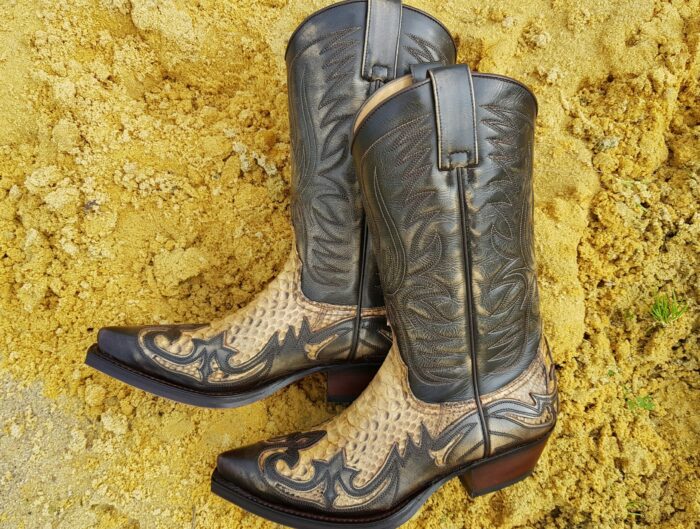In the morgue, my mentor, Susan, is teaching me how to cut open a corpse’s head. She lets me hold the oscillating bone saw, her blue-paper-gowned chest pressed against my back, while she reaches around so that her gloved hand is laced over my own. When we pull the trigger together, the saw comes to life with a whirring buzz. She guides me downward, so that the tip of the blade is cutting through the surface of the skull, as clouds of white smoke rise, and tiny shards of debris fly up and bounce off our goggles. She squeezes the grip through my fingers and draws the saw lower, until I feel the give of the blade through to the other side of the bone; then she lifts us out of the cut we’ve made together.
“You don’t want to go too deep,” she says. “You want to preserve the integrity of the brain underneath.”
The decomposed man was found floating in the water at Ocean Beach. The morgue’s ventilation fans are blowing, but the putrid odor still penetrates my respirator mask.
When we pull the top of the skull away, a kind of runny soup pours out, with pink-tinged particles like minced shrimp remaining inside. Susan scoops the pieces onto a weighing pan.
She uses a retractable hose to spray the metal table down, and all the murky fluid and debris washes away.
“You’ve got a soft touch with the saw,” she says. “You’ll be good at this.”
I cover my mouth with both hands, trying to hide my dry heaves.
❦
During our lunch break, in the summer heat, we sit near The Claw, the bronze sculpture fountain that looks like mangled deer antlers, with jets of water spraying in random directions.
I’ve just told Susan why I decided to go to autopsy technician school. How I used to be a hospital nurse, but last year I killed a pediatric patient by accidentally administering the wrong dose of a drug.
“The boy was only five,” I say.
Susan reaches out to touch my shoulder. In the sunlight, I’m shivering.
I try to imagine her with her goggles back on, hiding the deep green of her eyes, banding her curly auburn hair flat against her forehead. Wrapped and obscured in her pale medical gown, instead of the pretty yellow sun dress she’s wearing now.
“I figured that in autopsies, there’s less chance to do any harm,” I say.
She’s still holding my shoulder. When I glance up, the breeze is lifting the curls of her hair from her face.
My pager goes off to let me know there’s another body, this time from the hospital ward. My worst fears are realized when I see the page is from pediatric intensive care.
“You can skip this one,” Susan says.
I wad up my lunch bag and rise, facing the glassy hospital tower. It’s the student’s job to collect the bodies and bring them to the morgue. “I want to do it.”
“Then let me go with you.”
❦
Sometimes I’ll just be wandering my neighborhood, and there’ll be a little boy walking past on the sidewalk, sucking his thumb, holding his mother’s hand, and it’ll all come rushing back. My
desperate attempt at resuscitation, compressing the tiny fragile torso, the doctor yelling out orders, the boy turning pale beneath my hands, his expressionless face tipping forward each time my palms push into his breastbone.
❦
In the quiet of the hospital room lies a boy, six years old, motionless on his bed. Electrical monitors off, EKG leads dangling from his chest.
“Let me do this one,” Susan says, from under her mask. “Really.”
I shake my head, and reach over the child’s body to peel off his EKG leads, one by one. His skin is icy.
“Do I just pick him up?” I ask. I dread the idea of lifting the boy, stiff and cold in my arms.
“No,” Susan says. “Let me show you how to transfer him.”
She wheels the gurney next to his bed. She comes up from behind me, reaching out for the sheets under the boy. I feel faint, like I could fall over, but she’s got me wedged snug between the gurney and her chest.
“On the count of three,” she says.
Together we pull on the sheets, the boy’s body sliding from his bed to the gurney. He lands with a bounce, sifting his tousled hair, his rubbery cheeks fluttering. For a moment, I see the other boy, my patient, cradling his stuffed bear on the hospital bed. He asked if it was going to hurt, as I drew up his medication. I told him no, it won’t hurt, no ouchies of any kind.
I stagger backward, my gut heaving and twisting, as I think about who my patient would have grown up to be. Or even if he could just be sitting on the kindergarten carpet right now
holding his bear, circled up with his buddies in front of the teacher. And his parents’ tsunami of anguish and devastation—I pray that his mother and father can eventually move on, though how could they ever?
Susan’s all gowned up, wheeling the boy away to the morgue, by herself.
I’m still in the boy’s hospital room. Hunched over in the corner, sobbing.
❦
There’s an opening at Blue Shield for an RN-level position, a remote desk job, reviewing the appropriateness of health insurance claims. I could do all the work on my laptop from home. No contact necessary with anyone, living or dead.
I’ve finished typing the new job application. I click the Send button.
I’m getting ready to write my resignation letter to Susan. In the stillness of my apartment, I’m thinking of the spouting fountain, the comforting warmth of her hand on my shoulder, her green eyes welling up in the sun.


